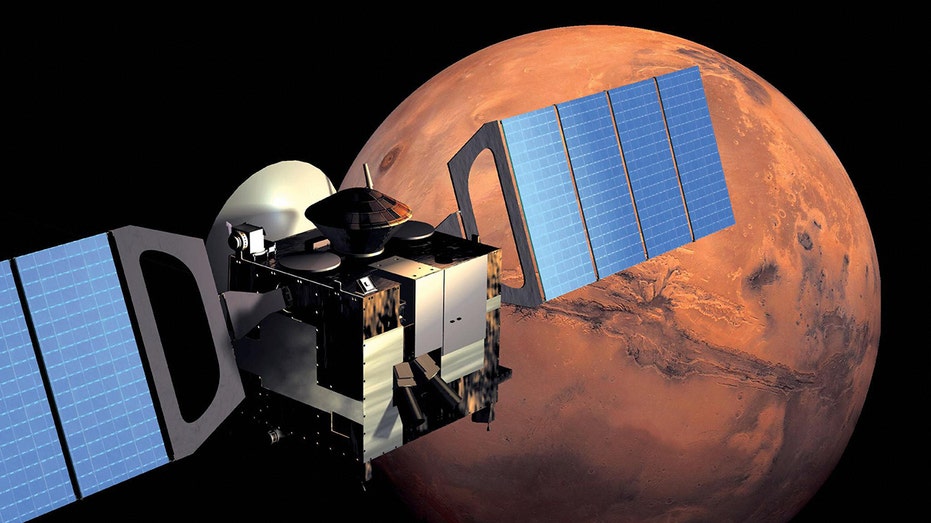New Research Suggests Mars’ Iconic Red Color May Reflect a Habitable Past

The Origins of Mars’ Red Hue: Ferrihydrite and Water
Mars’ unmistakable red coloration stems from the mineral ferrihydrite, a compound that forms only in the presence of cool, liquid water. A recent study indicates that this mineral significantly contributes to the planet’s distinctive appearance. Unlike other iron-rich minerals on Mars, such as hematite, which also influence its coloration, ferrihydrite forms at lower temperatures, suggesting unique environmental conditions in Mars’ past.
This discovery challenges previous assumptions and points toward a time when Mars may have hosted stable bodies of liquid water, creating a potentially habitable environment billions of years ago.
Implications for Mars’ Ancient Climate and Water History
NASA’s recent findings, supported in part by the space agency, highlight that the planet’s surface and dust contain abundant ferrihydrite. This mineral’s presence indicates that Mars once had a climate that was not only wet but also cool enough to support liquid water, a crucial factor for habitability. This evidence aligns with other geological signs suggesting Mars transitioned from a wetter, more hospitable world to the cold, arid planet we see today.
Scientists believe that the conditions necessary for ferrihydrite formation—namely, the interaction of water and oxygen with iron—were present during Mars’ early history, hinting at a markedly different environment from the current icy deserts.
Research Methods and Key Findings
The study, published in Nature Communications, involved analyzing data collected from multiple Mars missions, including several rover explorations. Researchers conducted laboratory experiments simulating Martian conditions to observe how light interacts with ferrihydrite particles and other minerals. This innovative approach allowed scientists to better understand the mineral’s role in giving Mars its red color.
Lead researcher Adam Valantinas, a postdoctoral fellow at Brown University, explained that their analysis suggests ferrihydrite is widespread in Martian dust and likely in rock formations as well. Although ferrihydrite’s role in Mars’ coloration has been considered before, current methods enable more precise testing and modeling of its formation processes.
The Significance of Martian Mineralogy for Future Exploration
Senior researcher Jack Mustard emphasized that this study opens new avenues for understanding Mars’ past environments. It provides a framework for interpreting mineral formation conditions and reconstructing the planet’s climate history. Furthermore, the ongoing collection of samples by NASA’s Perseverance rover offers an exciting opportunity to verify these findings directly on Mars.
By examining returned samples, scientists hope to confirm whether ferrihydrite and other indicators truly point to a once habitable environment, deepening our understanding of Mars’ potential to have supported life billions of years ago.
Broader Impact on Space Exploration and Habitability Research
This research underscores the importance of international collaboration in planetary science. As NASA and global partners work together, discoveries like this enhance our understanding of the solar system’s history and the potential for life beyond Earth. The evidence of past water activity and mineral formation provides vital clues to the conditions that might have fostered life on Mars.
According to Geronimo Villanueva, NASA’s Associate Director for Strategic Science, these findings highlight the value of coordinated efforts in unraveling fundamental questions about planetary evolution and habitability. They also reinforce the importance of studying both ancient and present-day conditions on Mars.
Questions About Mars’ Past and Future Research Directions
Postdoctoral researcher Valantinas expressed a desire to further explore the planet’s climate history and chemical processes. Understanding how ferrihydrite formed involves examining the environmental conditions—such as oxygen levels and water chemistry—that existed during mineral formation. These insights help scientists piece together Mars’ ancient environment and assess whether life could have once thrived there.
As Martian winds continue to spread dust across the planet, the iconic red hue remains a reminder of a distant, wetter past. Future missions and laboratory studies aim to uncover more about this intriguing chapter in Mars’ history, opening new horizons for planetary science and astrobiology.




